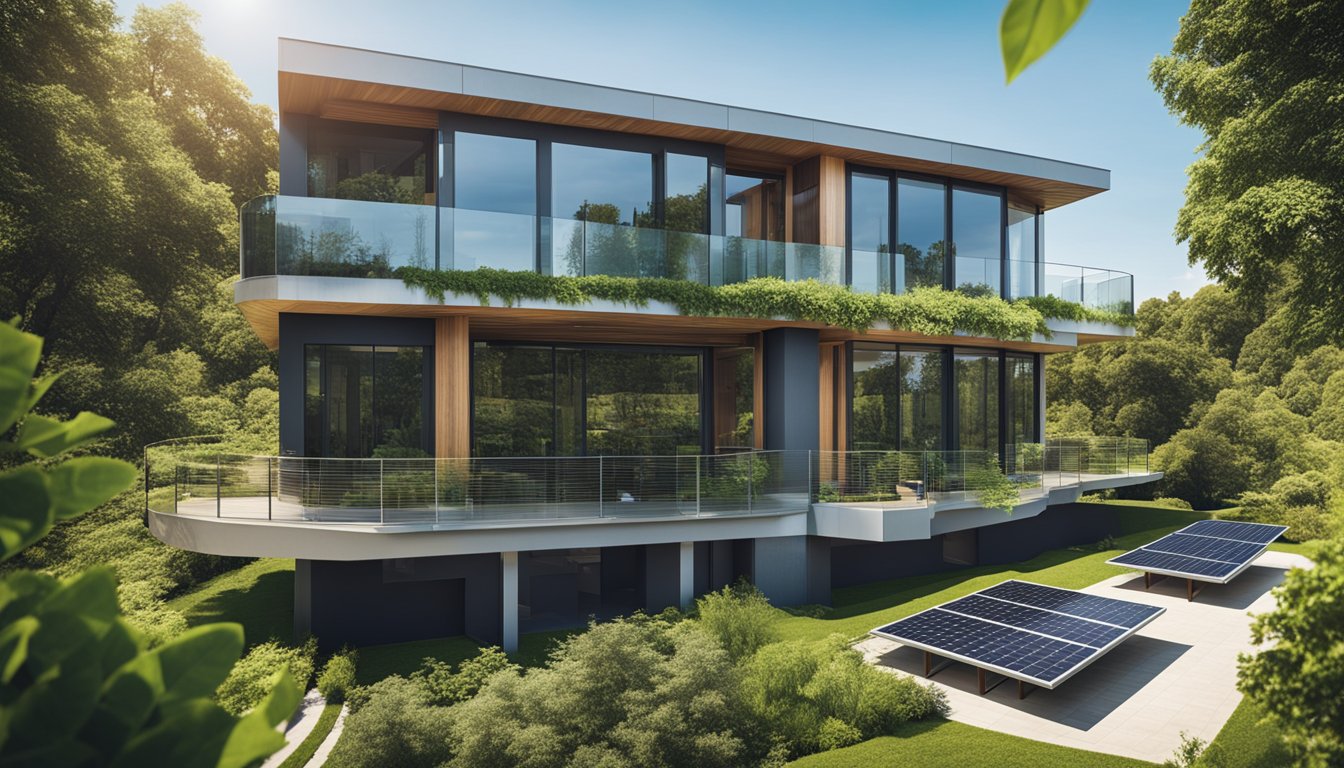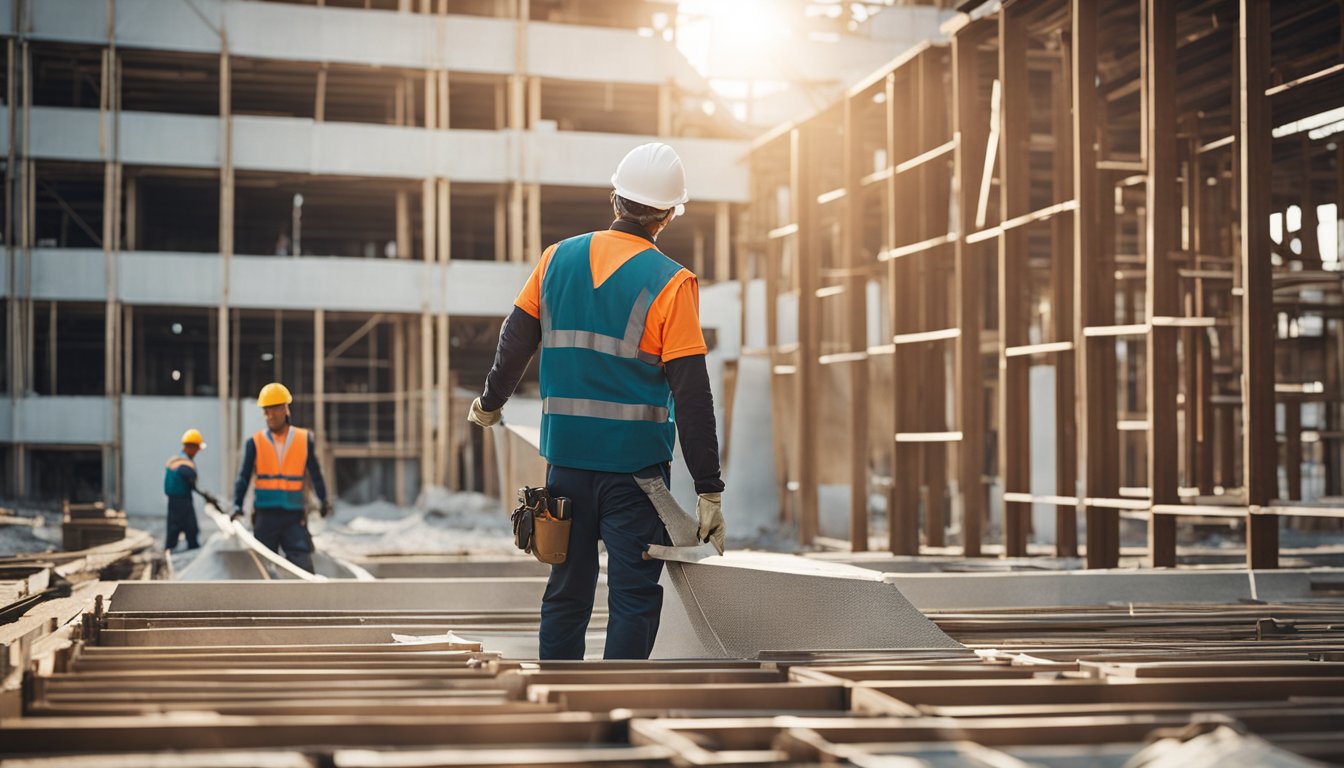Late updated: 27 Mar 2025 15:03
Written by: Sarah Hollister
Innovative Eco-Friendly Construction Materials: Revolutionising Sustainable Building Practices
In today's rapidly evolving construction industry, the demand for innovative eco-friendly materials is more crucial than ever. As our global community becomes more conscious of environmental responsibility, these groundbreaking sustainable building materials are paving the way for a greener future. By integrating such materials, we can significantly reduce our carbon footprint and promote more sustainable practices in construction.

Materials like low-carbon concrete, recycled steel, and bamboo are transforming how we approach building projects. These innovations not only offer environmental benefits but also present economic advantages through cost savings and improved efficiency. By exploring these options, we can contribute to a more sustainable world while also reaping the benefits of cutting-edge technology.
To stay at the forefront of green construction, it is essential for us to be aware of the latest advancements and implement them in our projects. With a focus on both environmental and economic benefits, these eco-friendly materials hold the promise of transforming our industry for the better.
Key Takeaways
- Innovative materials reduce environmental impact.
- Eco-friendly options offer economic benefits.
- Adoption of such materials is crucial for sustainability.
Eco-Friendly Building Materials and Technology
Incorporating eco-friendly materials and technology in construction can significantly reduce the environmental impact, enhance energy efficiency, and promote sustainable living. These solutions embrace both traditional wisdom and cutting-edge tech.
Renewable Resources and Recycled Materials
Our focus on renewable resources has highlighted the benefits of materials like bamboo and reclaimed wood, which offer sustainability due to their rapid regrowth or reuse. Bamboo grows quickly and is both strong and flexible, while reclaimed wood provides character and reduces landfill waste.
On the recycled front, recycled glass and steel are increasingly popular. Recycled steel maintains strength and durability, vital for structural applications. Meanwhile, recycled glass is used for decorative purposes and thermal insulation. These materials help conserve natural resources and energy, keeping our carbon footprint in check.
Emerging Sustainable Materials
As we explore emerging materials, hempcrete and mycelium are at the forefront, providing innovative sustainability solutions. Hempcrete, made from hemp fibres, acts as an excellent insulator and works well for thermal regulation. It's breathable, lightweight, and reduces the need for synthetic insulations.
Mycelium bricks, derived from fungi, are another area of interest. They offer a biodegradable and energy-efficient alternative to traditional bricks. For load-bearing structures, cross-laminated timber (CLT) and engineered wood are gaining ground. These are sustainable, and they capture carbon, reducing greenhouse gases. Such materials showcase how creativity and science can drive sustainable construction.
Innovative Construction Technologies
Innovative technologies are reshaping the construction landscape. Smart glass can regulate light and heat, offering energy efficiency by adjusting their properties in response to environmental changes. It reduces the need for artificial lighting and temperature control.
Further, smart building systems integrate digital solutions to monitor energy use and manage resource conservation effectively. Digital twins, virtual replicas of physical buildings, allow us to simulate and optimise performance before actual construction, aiding in crafting more eco-conscious strategies. These technologies help in driving us towards a more sustainable construction future, balancing innovation with environmental consciousness.
Environmental and Economic Benefits

Eco-friendly construction materials offer critical advantages for both the environment and our economies. By reducing carbon emissions and enhancing indoor air quality, these materials not only contribute to addressing climate change but also improve overall human well-being and offer significant cost savings.
Improving Carbon and Energy Footprint
Eco-friendly building materials play a vital role in decreasing carbon emissions and optimising energy consumption. By utilising materials with high thermal mass, such as concrete or stone, we can maintain stable indoor temperatures, reducing the need for additional heating or cooling. This results in fewer greenhouse gas emissions and lower energy consumption.
Additionally, using locally sourced materials diminishes the need for long-distance transport, further cutting our carbon footprint. Many green materials aim for carbon neutrality by offsetting emissions produced during their lifecycle. This reflects a commitment to environmental responsibility, enhancing the resilience of our built environment and conserving biodiversity.
Advantages for Health and Longevity
Utilising green materials ensures improved indoor air quality by reducing exposure to toxic chemicals and volatile organic compounds (VOCs). This is crucial for enhancing our health and well-being, as poor air quality can lead to respiratory issues. Builders increasingly choose materials with natural compositions to ensure safer homes and workplaces.
Durable and fire-resistant materials contribute to building longevity, reducing the frequency of repairs and renovations. Structures that last longer are not only efficient financially but also contribute less waste, safeguarding our ecosystems.
Cost Effectiveness and Waste Reduction
Eco-friendly construction does not only address environmental issues but also brings economic benefits. By employing materials known for their durability and low maintenance needs, long-term costs are reduced significantly. The initial investment in high-quality materials often pays off through decreased repair and maintenance expenses.
Moreover, sustainable building practices aim to minimise waste production. Using recyclable and sustainable materials helps reduce plastic waste and other by-products common in commercial construction. Effective waste management strategies also aid in cost savings, making eco-friendly construction a financially sound choice for future developments.
Frequently Asked Questions

Exploring innovative eco-friendly construction materials involves understanding the benefits and applications of these sustainable options. Various materials are making significant impacts on the industry due to their environmental benefits and performance.
What are the leading eco-friendly materials currently used in sustainable building?
Recycled steel, bamboo, and hempcrete are some of the top choices. Recycled steel reduces the need for mining new ore and is durable. Bamboo grows quickly, making it a renewable choice. Hempcrete offers excellent insulation properties and is made from renewable resources.
How does cross-laminated timber contribute to eco-friendly construction?
Cross-laminated timber (CLT) provides strong structural support while being a renewable resource. It sequesters carbon, making it a better environmental choice compared to traditional concrete or steel. Its production process utilises less energy and results in minimal waste.
Can you provide a list of the most sustainable materials suitable for building homes?
Homes can benefit from materials like recycled plastic, straw bales, and cork. Each of these materials offers distinct benefits such as energy efficiency, insulation properties, and sustainable sourcing. These choices help reduce a building's carbon footprint over its lifetime.
What innovative developments are emerging in eco-friendly construction materials?
Recent developments include biodegradable composites and materials from agricultural waste. These innovations focus on reducing waste and enhancing the sustainability of construction practices. Such advancements demonstrate a commitment to more eco-conscious building solutions.
In what ways are sustainable building materials impacting the Canadian construction industry?
In Canada, sustainable materials are becoming critical in meeting environmental regulations. They are helping to improve energy efficiency and reduce emissions across the building sector. The use of local resources also supports the economy and lowers transportation impacts.
What materials are recommended for eco-friendly school projects and why?
For school projects, materials like cork flooring and low-VOC paints are recommended. Cork provides a soft, durable surface that insulates sound. Low-VOC paints improve indoor air quality, protecting children's health. These materials support a healthy, sustainable learning environment.
